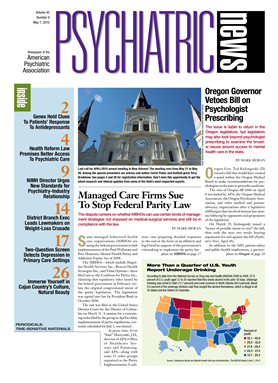A high rate of potentially deadly inhalant use among 12-year-olds is leading federal health officials to urge clinicians to educate parents on the warning signs of inhalant use among children.
The rate of lifetime inhalant use among 12-year-olds nationally—6.9 percent—trails only the 9.8 percent rate for alcohol use among abused substances in this population from 2006 to 2008, according to the results of the National Survey on Drug Use and Health by the Substance Abuse and Mental Health Services Administration (SAMHSA). However, a University of Michigan study released in December 2009 noted some good news: past-year use among eighth graders declined from 9.5 percent in 2005 to 8.1 percent in 2009.
Serious risks from inhalant use include death, and up to 200 minors die each year from inhalant use, according to Harvey Weiss, executive director of the National Inhalant Prevention Coalition. Inhalant use has been linked to permanent damage to organs, including the heart and liver, as well as nervous system and mental health problems.
The easy accessibility of more than 1,000 products that have been used by children as inhalants makes prevention particularly challenging. And the short-term “high” these substances provide can make detection of abuse difficult. So clinicians should watch for long-term effects, such as emotional instability, cognitive impairment, persistent short-term memory loss, and loss of the sense of smell. Physicians also should educate parents to watch for such signs as chronically red or runny eyes or nose, paint or stains on the body or clothing, nausea, loss of appetite, and drooling.
Educating parents and children about the short-term and long-term dangers of inhalant abuse may be the most effective way to reduce the number of adolescents using such chemicals, said Pamela Hyde, J.D., administrator of SAMHSA, at a March press conference. Treatment is difficult once the abuse becomes a long-term behavior, she noted.
“Parents are not used to thinking of these products as dangerous because they weren't made to be inhaled,” she said.
Physicians play an important role, too, said Weiss. “Unless physicians ask the right questions and are aware of inhalant use [as a potential problem], then it might go undetected.”
Inhalant use may be a particular issue for clinicians who treat adolescents for substance use problems, because minors who abuse inhalants tend to begin abusing drugs at a younger age, according to Weiss. Thus, clinicians should watch for warning signs among all young patients, because there is no socioeconomic, ethnic, or gender profile that fits a “typical” inhalant user.
Federal health officials launched a media campaign in March to alert clinicians about adolescent inhalant abuse. They said at the March press conference that the effort aims to build on previous initiatives to raise awareness and further reduce inhalant use. They credit a recent decline in inhalant use among Texas teens to a statewide education effort there. However, some fear that recent surveys showing a drop in the perceived danger of inhalant use among teens may portend an increase in use.
“When the perceptions of risk decline, we usually see an increase in abuse,” said Timothy Condon, Ph.D., deputy director of the National Institute on Drug Abuse, during the press conference.
Information on the clinician education effort through the National Inhalant Prevention Coalition is posted at <www.inhalants.org>. 

